|
| Links | Williams, Paul H., Robbin W. Thorp, Leif L. Richardson, and Sheila R. Colla. Bumble Bees of North America: An Identification Guide. Princeton University Press, 2014. http://www.jstor.org/stable/j.ctt6wpzr9.
- has the best modern color guides for identification of both sexes, microscopic identification characters, range and natural history notes.
Give it a common name of Indiscriminate Bumble Bee.
- Hosts
- Static Discover Life page
|
80x5 -
240x3 -
240x4 -
320x1 -
320x2 -
320x3 -
640x1 -
640x2
Set display option above.
Click on
images to enlarge. |
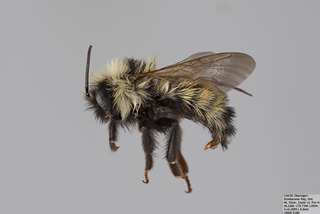
© Copyright Laurence Packer 2014
· 7
Bombus insularis MALE mm - f |
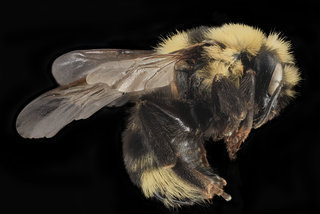
© Copyright source/photographer
· 7
Bombus insularis, F, back, Park Co, WY |
|
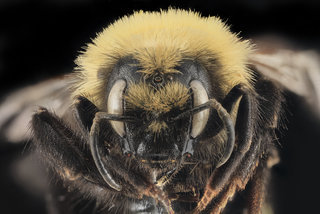
© Copyright source/photographer
· 7
Bombus insularis, F, face, Park Co, WY |
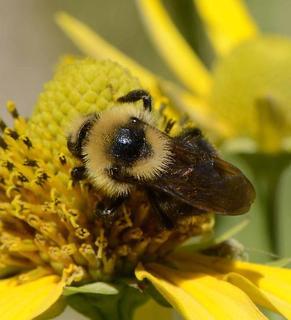
Diane Wilson · 5
Bombus insularis, Diane Wilson |
|
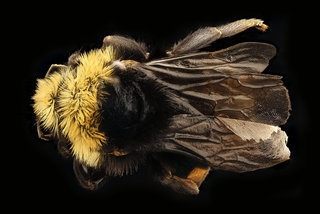
© Copyright source/photographer
· 5
Bombus insularis, f, back, Yosemite, CA |
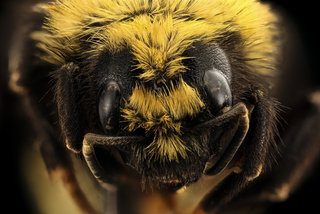
© Copyright source/photographer
· 5
Bombus insularis, f, face, Yosemite, CA |
|
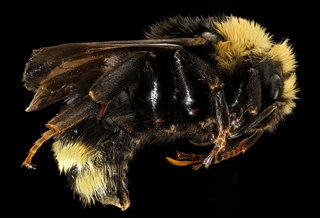
© Copyright source/photographer
· 5
Bombus insularis, f, right, Yosemite, CA |
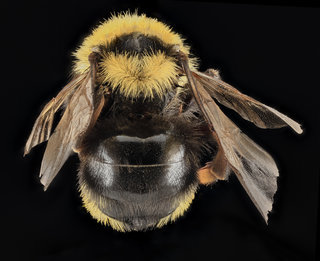
© Copyright source/photographer
· 5
Bombus insularis, F, back, Park Co, WY |
|
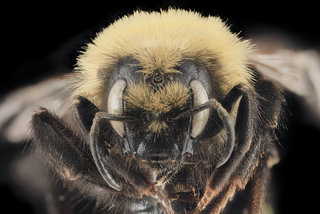
© Copyright source/photographer
· 5
Bombus insularis, F, face, Park Co, WY |
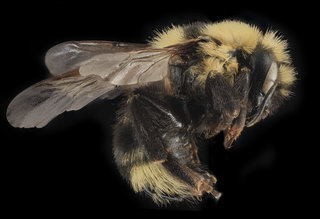
© Copyright source/photographer
· 5
Bombus insularis, F, side, Park Co, WY |
|
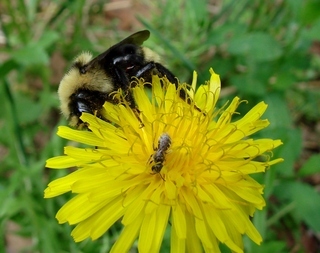
© Copyright John Ascher, 2006-2014
· 4
Bombus insularis, Indiscriminate Cuckoo Bee |
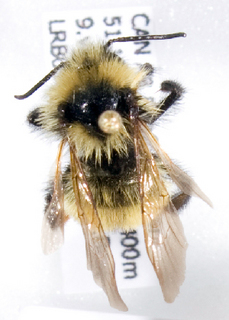
Barcode of Life Data Systems · 1
Bombus insularis, Barcode of Life Data Systems |
|
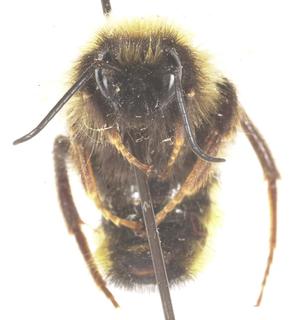
© Photographer/source
male front
UGCA196034_01
|
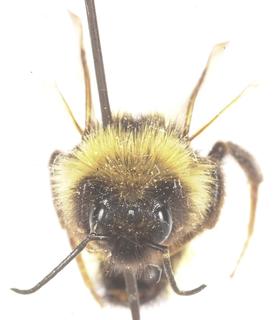
© Photographer/source
male front top
UGCA196034_02
|
|
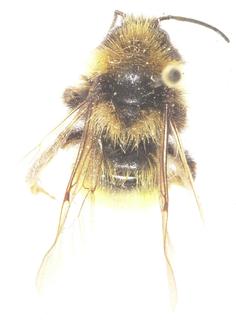
© Photographer/source
male top
UGCA196034_03
|
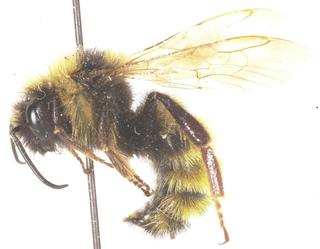
© Photographer/source
male side
UGCA196034_04
|
|
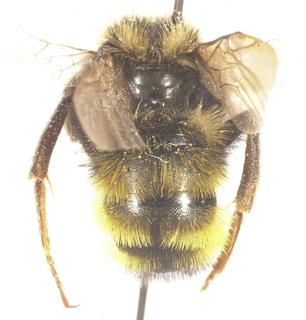
© Photographer/source
male rear
UGCA196034_05
|
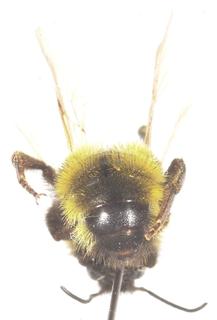
© Photographer/source
male rear tip
UGCA196034_06
|
|
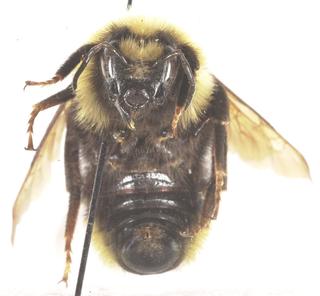
© Photographer/source
queen front
UGCA196035_01
|
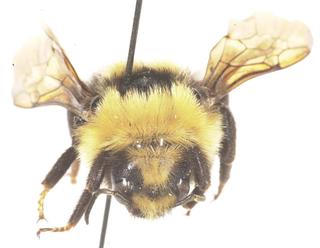
© Photographer/source
queen front top
UGCA196035_02
|
|
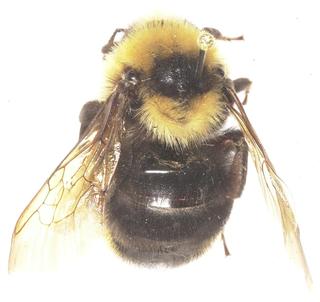
© Photographer/source
queen top
UGCA196035_03
|
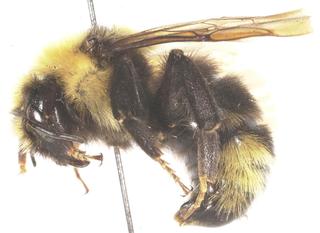
© Photographer/source
queen side
UGCA196035_04
|
|
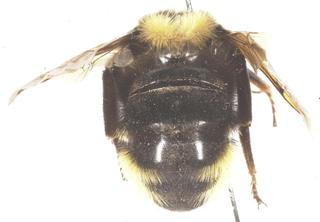
© Photographer/source
queen rear
UGCA196035_05
|
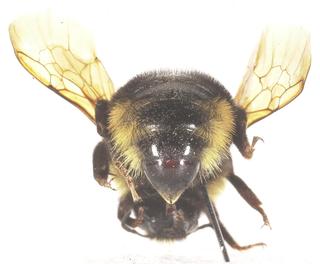
© Photographer/source
queen rear tip
UGCA196035_06
|
|
Overview |
Reprinted with permission from: Mitchell, T.B. 1962 Bees of the Eastern United States. North Carolina Agricultural Experiment Station Technical Bulletin No. 152.
FEMALE Length 16-19 mm., breadth of abdomen 8-9 mm.; black, the tarsi piceous, tegulae brownish-testaceous, wings rather lightly infuscated, veins testaceous to blackish; face and cheeks largely black pubescent, but with erect, rather copious, yellowish pubescence between and above the antennae and on vertex; pubescence of thorax long and copious, pale yellowish in large part, but venter and posterior half of scutum largely black pubescent; legs with short, largely black pubescence; abdominal terga 1 and 2 with dense black pubescence, 3 and 4 yellow pubescent laterally but black medially, 5 largely black, but with some elongate, yellowish hairs at each extreme side, tergum 6 nearly bare; clypeus quite coarsely, closely and deeply punctate laterally, more finely so along upper margin, median apical area shining, with very minute and sparse punctures; labrum slightly excavated medially, basal area on each side triangularly produced, the projecting lip beyond this medially with a slightly elevated margin, the apical margin rather broadly rounded and considerably depressed; apex of mandible with a very slight, median notch, outer surface shining, with only extremely minute, scattered and obscure punctures evident; malar space shining, very irregularly and minutely punctate, median length about two-thirds basal width of mandible, and about one-third length of eye; lateral ocelli subequally distant from eyes and each other, distance to margin of vertex about twice as great; scape slightly more than half the length of the flagellum, segments 1 and 3 of flagellum about equal, segment 2 considerably shorter and slightly broader than long; sternum 6 shining, rather broadly rounded apically, strongly swollen on each side medially, with a quite dense, apical fringe of very short, brownish hairs.
MALE Length 13-16 mm., breadth of abdomen 4-5.5 mm.; black, apical tarsal segments and spurs more piceous; tegulae brownish-testaceous; wings uniformly but lightly infuscated, veins testaceous to piceous; vertex with a median patch of elongate, yellow pubescence and a small amount of yellow just above antennae medially, head otherwise with copious and elongate, black pubescence; posterior half of scutum black pubescent, with a small amount of black on scutellum medially, the venter of thorax and lateral margins of propodeum black in part, otherwise pleura, scutum anteriorly, scutellum posteriorly and posterior face of propodeum with elongate, copious, yellow pubescence; legs black pubescent basally, becoming somewhat paler on the tarsal segments, the posterior fringes of sparse, elongate, pale hairs; abdominal terga 1-4 with copious, rather elongate, yellowish pubescence, 5-7 with black, a small amount of yellow on 6 laterally; clypeus finely, closely and deeply punctate in general, only the apical margin narrowly shining and impunctate medially; labrum shining, punctures minute, apical margin broadly subtruncate, only slightly depressed, with a transverse fringe of short, erect, black hairs; mandibles short and slender, distinctly bidentate apically, outer surface quite densely pubescent, lower margin with a fringe of elongate, more or less curved, fuscous hairs; malar space shining, with only very minute, scattered punctures, median length somewhat less than basal width of mandibles about one-fifth length of eye; lateral ocelli subequally distant from eyes and each other, distance to margin of vertex only slightly greater; punctures of face very fine and densely crowded, vertex medially with densely crowded but rather fine striate punctures medially, lateral punctures close but more rounded, area adjacent to each lateral ocellus polished and impunctate; scutum with a narrow, median area posteriorly where the surface is shining and sparsely punctate, punctures otherwise quite uniformly close on scutum, scutellum and pleura; sterna 7 and 8 and genital armature similar to variabilis (fig. 134).
DISTRIBUTION Although widespread in Canada and the Northern United States, this species has been rare in collections received for study. Specimens have been identified only from New Brunswick and New York, May to August.
HOST Plath (1934), quoting Sladen. gives Bombus flavifrons as the host of insularis. Since the ranges of these two species do not entirely coincide, it seems evident that it will select some other species of Bombus as well.
|
|
|
Identification | |
Extracted from Jonathan Koch, James Strange, Paul Williams. 2012. Bumble Bees of the Western United States. A product of the U.S. Forest Service and the Pollinator Partnership with funding from the National Fish and Wildlife Foundation Indiscriminate cuckoo bumble bee Status: Common
Select food plant genera: Erigeron, Solidago, Aster, Wyethia, Senecio, Trifolium Tongue Length: Short
|
|
|
Names | |
|
|
|
Natural history | |
Williams et al. 2014 - list this as the indiscriminate cuckoo bumble bee since it is a breeding parasite of many species of bumble bees including: B. oppositus, B. fervidus, B. flavifrons, B. nevadensis, and B. tenarius. It has been recorded as also present in nests of B. rufocinctus, B. occcidentalis, and B. terricola.
|
|
| Supported by | |
Updated: 2024-07-27 01:37:07 gmt
|